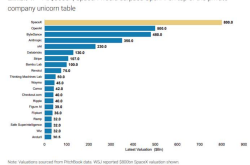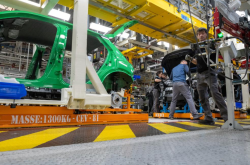Internet giants reinvest collectively, embodied intelligence starts to compete in ecology
![]() 07/22 2025
07/22 2025
![]() 531
531

Author | Xiang Xin
This year's financing in the field of embodied intelligence has been truly exceptional.
Just halfway through 2025, financing in the field of embodied intelligence has seen another intensive outbreak. In the first 21 days of July alone, there were 16 financing events in the domestic embodied intelligence field, with a total financing amount exceeding 4.5 billion yuan.
This financing boom is not a coincidental short-term burst. The same result is seen when considering the entire year.
According to IT Juzi data, in the first half of 2025, there were 114 investment and financing events in the domestic embodied intelligence field, with a cumulative total financing amount exceeding 14.5 billion yuan, both exceeding the 92 events and 9.8 billion yuan of the entire year 2024.
Notably, internet giants have occupied an important position in these financings.
For example, JD.com, which invested in Zhiyuan Robotics in May, strategically led the investment in Zhuji Power in July, and also led investments in Qianxun Intelligence and Zhongqing Robotics. JD.com has placed bets on the humanoid robot track four times in two months.
In addition to JD.com, in the past six months, internet giants such as Alibaba, Tencent, ByteDance, Baidu, Meituan, Didi, and Ant Group have all appeared on the list of investors in embodied intelligence enterprises, and have led multiple rounds of financing.
However, the role of internet giants is far from being simply investors or scenario providers. Behind their investment behavior lies a strategic consideration to build a technology and industrial ecology.
Some embodied intelligence startups have also transformed from being purely "investees" to actively selecting capital and partners that match their development pace and strategy.
In this two-way selection between giants and embodied intelligence startups, the underlying logic of embodied intelligence development begins to change, and the construction of standard technology platforms and ecological collaboration become more important.
A deeper level of competition is unfolding in the field of embodied intelligence. 
The imagination space of technological cooperation
To understand the relationship between internet giants and embodied intelligence enterprises, one can see the intricacies from the combination of JD.com and Zhuji Power - one has been active in the field of embodied intelligence recently, and the other has been strategically invested in by two internet giants successively.
In the past six months, JD.com first established a business department related to embodied intelligence, focusing on the home direction, and then invested in Zhiyuan Robotics, Zhuji Power, Qianxun Intelligence, and Zhongqing Robotics, while successively releasing self-developed embodied intelligence technology achievements.
Zhuji Power has been invested in successively by two internet giants, Alibaba and JD.com. In March this year, Zhuji Power announced the completion of its Series A financing, amounting to 500 million yuan, with Alibaba as the strategic lead investor.
Technological cooperation is the first layer of imagination behind JD.com's strategic investment in Zhuji Power.
Zhuji Power positions itself as a developer of a general-purpose base for embodied intelligence, with technology research and development divided into three lines:
Ontology: full-size humanoid robots, bipedal robot TRON 1, etc.;
Cerebellum: reinforcement learning-driven full-body motion control;
Brain: embodied operation model LimX VGM.
In terms of layout, Zhuji Power already possesses full-stack research and development capabilities integrating hardware and software.
Its bipedal robot TRON 1 is equipped with a high-performance motion control algorithm and has completed product deliveries in more than 50 countries and regions worldwide.
The full-size humanoid robot has 31 degrees of freedom and stands over 165cm tall. 
Comparison of Boston Dynamics Atlas and Zhuji Power CL-3 humanoid robot flipping joints to stand up
The embodied operation model LimX VGM enables robots to master corresponding operational capabilities using only a small number of human video data samples and can be adapted to different robot ontology hardware.
In terms of business strategy, they mainly provide standardized legged robot ontologies and development toolchains, targeting three types of customers, referred to as "IDS":
Innovators: Realize technological innovation;
Developers: Realize functional development;
System Integrators: Realize technology integration and scenario landing development.
Among the three types of customers targeted by Zhuji Power, JD.com fits almost all of them: it is not only developing embodied intelligence-related technologies but also pursuing functional development, while also possessing a large number of landing scenarios.
JD.com's technical exploration in the direction of embodied intelligence is mainly divided into three directions:
Solving data problems: Releasing and open-sourcing the dual-arm mobile robot operation dataset JD ManiData, and launching the industry's first embodied intelligence atomic skill library architecture, which decomposes tasks into reusable atomic skills, reducing data requirements;
Solving operation problems: Developing an embodied intelligence system architecture and an integrated high-frequency teleoperation technology for dual-arm dexterous hands;
Solving brain problems: Based on JD.com's large model, the JoyInside platform is launched to endow robots with high EQ conversational abilities, enhancing human-computer interaction experience.
It can be seen that JD.com's technical reserves for embodied intelligence are mostly focused on the software and system levels, requiring a general-purpose robot platform that can be used for technical verification, promote technology evolution, and have the potential for landing applications.
Zhuji Power, on the other hand, happens to possess a set of robot ontology software and hardware systems that can serve as a base for technology research and development.
JD.com can conduct algorithm verification and new feature testing based on Zhuji Power's hardware and software platform, accelerating the migration of technology to scenarios.
Zhuji Power can iterate products and optimize toolchains by serving JD.com, enhancing the versatility and adaptability of the base.
For example, Zhuji Power's humanoid robot and VGM model can be combined with JD.com's JoyInside platform: The VGM embodied model emphasizes operational learning and execution, while JoyInside emphasizes human-computer dialogue and emotion recognition. The combination of the two into the humanoid robot ontology can form a more complete embodied interaction loop.
To use a simple metaphor, Zhuji Power is equivalent to an "infrastructure builder" who lays the foundation, while JD.com is more like an architect or designer who, on the basis of the foundation, expands the boundaries of embodied intelligence technology and focuses on industrial applications.
In addition, JD.com can also provide support at the infrastructure level. Its cloud computing platform possesses large-scale computing power and container resources, providing cloud support for Zhuji Power's model training, which is also expected to improve the overall training efficiency and deployment flexibility of the model.
The imagination space for technical cooperation between the two parties in these areas is enormous. However, joint research and development, system integration, and platform co-construction inevitably require a long period of running-in and verification.
But judging from JD.com's current investment in embodied intelligence technology, its combination with Zhuji Power is more likely to jointly create a continuously evolving embodied intelligence base ecology. 
Co-research approach of scenario cooperation
If the first step is to lay a good foundation, the second step is to find where to make it valuable.
Scenario cooperation is the second layer of imagination behind JD.com's investment in Zhuji Power.
JD.com possesses three core scenarios: retail, logistics, and home furnishing. These are precisely the most typical sales or landing places for general-purpose humanoid robots.
In the retail scenario, JD.com has over 20,000 offline stores. Store guidance, product display, interactive marketing, and other services are directions where robots can play a role.
In online retail channels, JD.com is also connecting with multiple humanoid robot enterprises to build a moat for the sales of emerging technology products, achieving category positioning and seizing market opportunities.
During this year's 618 period, humanoid products from multiple embodied intelligence robot enterprises such as Unitree Technology, Zhuji Power, Zhongqing Robotics, Songyan Power, and Zhongke Huiling were launched for sale on the JD.com platform, with sales of embodied intelligence robots on the platform increasing 17 times simultaneously.
In the logistics scenario, JD.com has over 3,600 warehouses and over 32 million square meters of warehousing resources nationwide. Humanoid robots and bipedal robots can undergo long-term testing and deployment in tasks such as sorting, handling, restocking, and terminal delivery.
Zhuji Power's robots already possess application potential in logistics scenarios. For example, its bipedal robot TRON 1 can remain stable in the face of sudden braking, hard acceleration, emergency steering, and other situations in speeding trucks.
Even if it falls, it can rely on its lower limbs to complete self-reconstruction and stand up. The ability of its dual wheels to move on multiple terrains has attracted many industry customers to develop applications on this platform, involving scenarios such as inspection, security, and delivery.
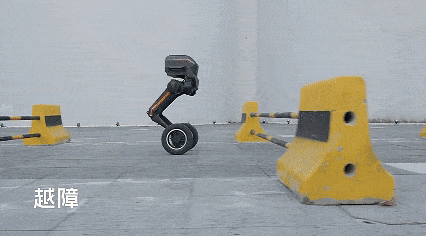
Zhuji Power bipedal robot
In the home direction, JD.com has built its own home appliance ecosystem. Its e-commerce platform reaches hundreds of millions of C-end customers, which are naturally connected to home scenarios. Developing home service robots clearly has a user base and scenario coverage advantage. Zhuji Power's humanoid robots can provide general ontology technical support for such development.
However, what is special is that based on the strategy of building a standardized and universal technology platform, Zhuji Power will not directly provide solutions for the application and landing of robots.
In this combination, JD.com is more likely to be the "scenario solution developer", and developing robot application landing solutions with commercial value should be the ideal type of customer for Zhuji Power.
Against the backdrop of heated discussions in the humanoid robot industry about "who will mass-produce first" and "who will enter the factory first", Zhuji Power's approach appears somewhat unusual: it is not in a hurry to mass-produce or immediately take up positions in factories.
Such a choice is prone to misunderstandings. But Zhuji Power's logic is that scenario providers themselves understand best how to land products.
They believe that the current phenomenon of mass production is a short-term effect of technological breakthroughs, but it does not represent that the technology is mature, and corporate demonstrations do not necessarily mean that the technology can be directly used.
Zhuji Power hopes to return the initiative for the last-mile scenario adaptation to enterprises like JD.com, while focusing on solving problems such as insufficient ontology stability, difficult general adaptation, low data efficiency, and brain model frameworks.
This is a more restrained but sometimes more reliable approach - it means that the enterprise will not sacrifice the value and stability of the product due to short-term market competition, investing a lot of manpower and material resources in landing operations.
Zhuji Power's "stable strategy" is manifested in its products by adhering to the research and development of full-size humanoid robots.
A full-size humanoid robot refers to a robot that highly simulates the shape and proportions of an adult in terms of size and structure, with a size close to that of an adult, usually standing between 1.5 meters and 1.9 meters tall.
Currently, many "internet celebrities" in the field of humanoid robots are medium and small in size. For example, Unitree Technology's G1, the rapidly evolving Booster T1, and Songyan Power's N2.
They stand between 1.1 and 1.3 meters tall, have a lightweight structure, agile movements, and a relatively affordable price, making them suitable for demonstrations and lightweight tasks with high market acceptance. 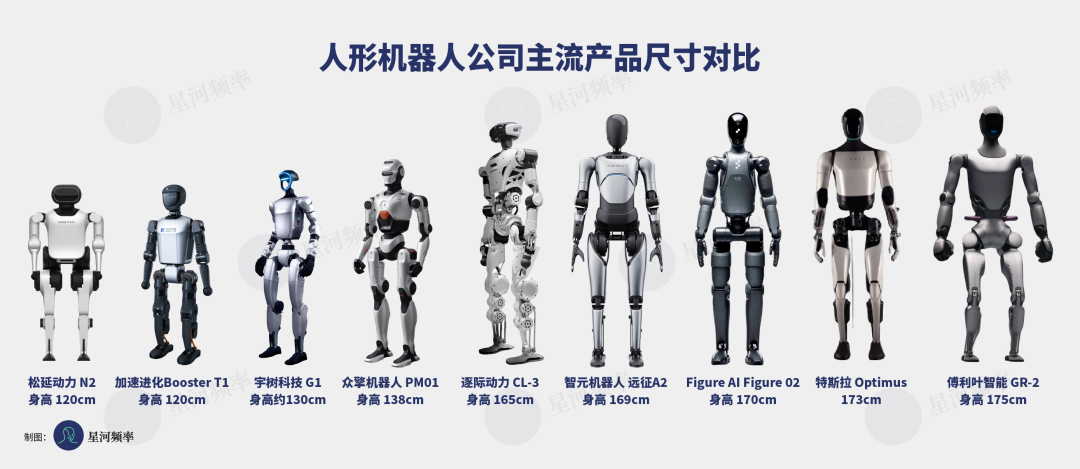
Full-size humanoid robots represent another route: closer to the form of real humans, more suitable for multi-scenario development, and crucially possessing platform-level universal capabilities.
The technical threshold for full-size robots is also higher - full-body motion control, load stability, power consumption control, perception fusion, system integration, each of which is related to whether the product can be used. Without solving these problems, so-called landing is essentially just a performance.
Zhuji Power insists on taking this route with higher technical difficulty and a longer research and development cycle, precisely valuing its platform's universal capabilities: capable of entering warehouses, homes, and factories, it prefers to provide a unified base for multiple scenarios rather than creating a robot for each task.
JD.com, on the other hand, happens to be a representative of such customers that require "multi-scenario coordination and component reuse". From e-commerce platforms and smart homes to warehousing and logistics, it has diversified businesses and also needs a highly adaptable robot platform for support. This customer demand best matches Zhuji Power's product thinking.
The future cooperation between the two may not be to create a humanoid robot for a specific scenario but to quickly refine a truly usable and versatile robot system in scenarios based on Zhuji Power's robot platform, toolchains, and its common embodied intelligence technologies. 
Investment and being invested in, collaboratively reshaping the industry landscape
The combination of JD.com and Zhuji Power also reflects that:
Internet giants are becoming a more important role in the embodied intelligence industry: they are both investors and ecological collaborators.
Some embodied intelligence startups have also undergone a transformation, from passive to active. They have earlier deviated from the passive mode of waiting for capital selection, transforming into actively selecting partners that suit their own pace and strategy, allocating resources, and seeking ecological partners that can complement and evolve synergistically.
Internet giants entering the embodied intelligence field usually have three types of approaches:
Investment and shareholding;
External cooperation: including cooperation in scenarios and technology directions;
Internal research and development: forming teams or self-developing technology. 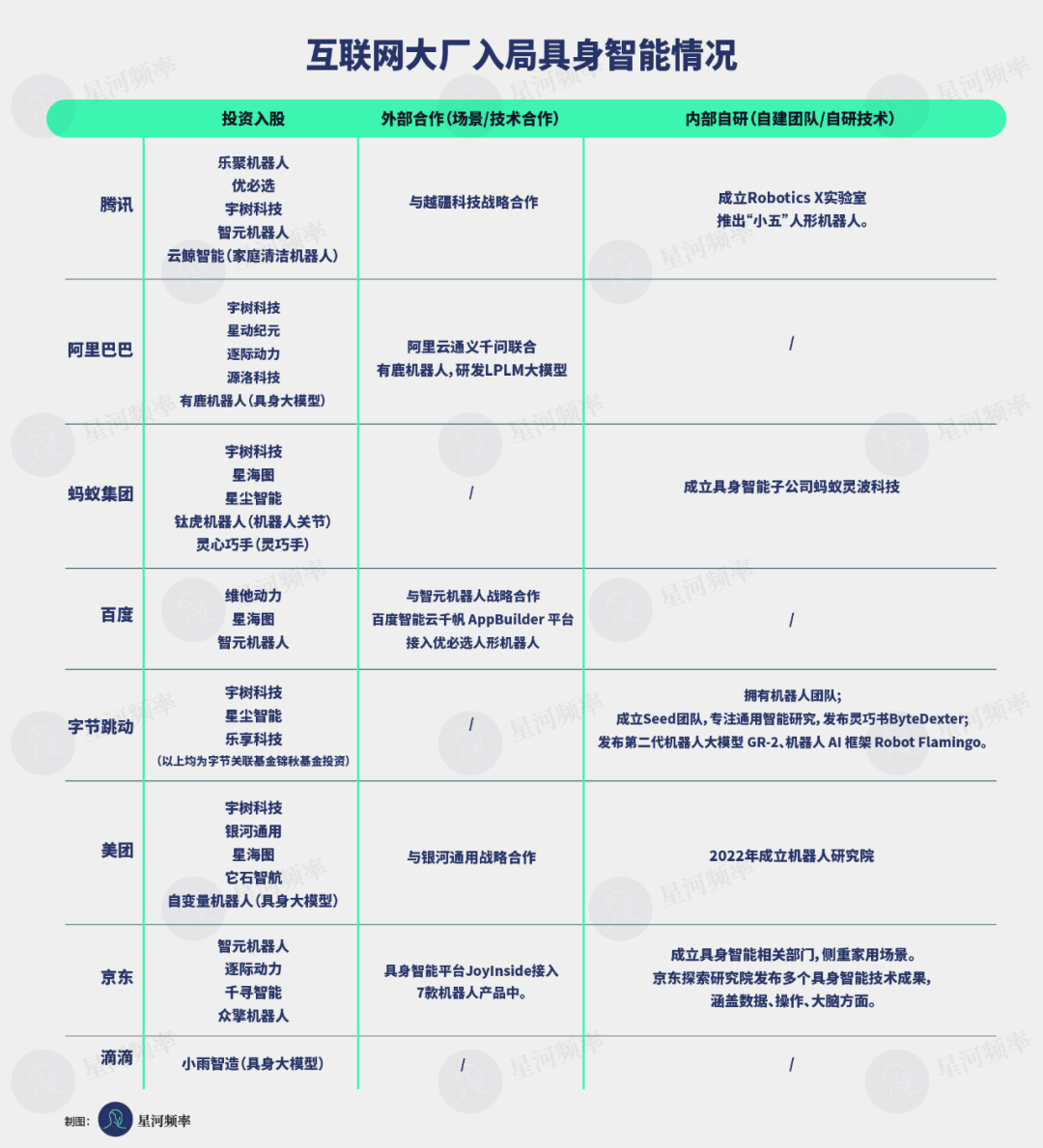
Most large companies will, in addition to investment and shareholding, reserve embodied intelligence-related technology and ecological partners.
Behind this approach lies the reshaping of ecological positions. Large companies are no longer satisfied with being simple investors or scenario providers, and they hope to participate in the construction of technology platforms even more.
Ecological synergy is reflected on the one hand in upstream links, where internet giants can provide embodied intelligence enterprises with key technologies and platforms such as large models and cloud computing.
This is because they have accumulated rich algorithmic foundations and AI platform capabilities in the wave of large models, stored abundant computing resources and data, and possess upstream enabling capabilities.
On the other hand, ecological synergy is reflected in downstream links.
Internet giants, through years of scenario operation, have mastered rich scenarios such as e-commerce, logistics, and households, possess hundreds of millions of user resources, and are also connected to many industrial parties. They can provide a real business environment to promote the development and implementation of embodied intelligent robot scenario applications.
Compared to automakers who tend to follow the heavy asset route of "self-research + self-use", internet giants are more willing to rely on external platforms to establish a collaborative ecosystem through technology openness and resource integration.
Among embodied intelligence startups, the commercialization strategy of Zhuji Power is typically representative. They introduce strategic resources such as Alibaba and JD.com, and target customers at R&D personnel, developers, and integrators, rather than directly providing landing solutions. They avoid the island effect of self-research, self-sales, and self-management, and embrace a co-research and co-construction ecosystem.
For Zhuji Power, internet giants are not just a single source of funding. In technology and scenario cooperation, their products can be more efficiently embedded into real business scenarios, accelerating product adaptation and the penetration of toolchains.
While controlling the pace of commercialization and maintaining the integrity of the technology mainline, they are also selectively amplifying resource efficiency and creating their own ecosystem with an open attitude.
Under this model, the role boundaries between embodied intelligence startups and internet giants begin to loosen, with each playing multiple roles such as technology promoters, platform co-builders, and application developers. Zhuji Power's financing, which seems to be the growth story of an embodied robot startup, actually also reflects that even startups are actively building their own ecosystems, and large companies have unwittingly become a part of their ecosystem.
With internet giants possessing AI technology reserves and scenario data resources, and embodied intelligence robot companies having closer to bottom-level software and hardware integrated R&D capabilities, the industry may need to remind itself: instead of asking which company will mass produce first, it is better to ask who is truly building infrastructure for the next stage of embodied intelligence, fully leveraging the advantages of all parties, and preparing for the large-scale implementation of real products.
By the second half of 2025, embodied intelligence is transitioning from a competition of teams and technologies to a comprehensive game of platform capabilities, ecological discourse power, and industrial division of labor.

